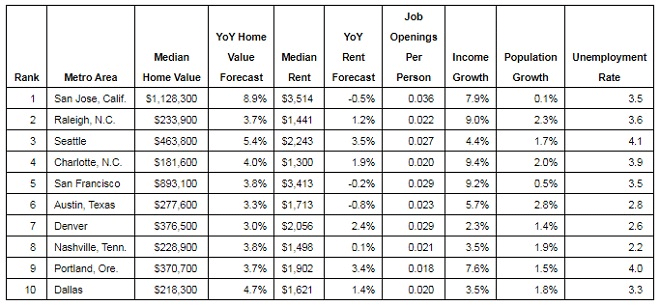But 64 Percent of Population Live in Markets More Affordable to Rent Than Buy; Least Affordable Rental Markets Led by Counties in Northern California, DC, Brooklyn; Most Affordable Rental Markets in Alabama, Illinois, Ohio, Tennessee
Irvine, CA – Jan. 11, 2018 (PRNewswire) ATTOM Data Solutions, curator of the nation’s largest multi-sourced property database, today released its 2018 Rental Affordability Report, which shows that buying a median-priced home is more affordable than renting a three-bedroom property in 240 of 447 U.S. counties analyzed for the report — 54 percent.

The analysis incorporated recently released fair market rent data for 2018 from the U.S. Department of Housing and Urban Development, wage data from the Bureau of Labor Statistics along with public record sales deed data from ATTOM Data Solutions in 447 U.S. counties with sufficient home sales data (see full methodology below).
“Although buying is still more affordable than renting in the majority of U.S. housing markets, that majority is shrinking as home price appreciation continues to outpace rental growth in most areas,” said Daren Blomquist, vice president at ATTOM Data Solutions. “Renting has clearly become the lesser of two housing affordability evils in many major population centers, with renting more affordable than buying in 76 percent of counties that have a population of 1 million or more. And when broken down by population rather than number of markets, this data shows that the majority of the U.S. population — 64 percent — live in markets that are more affordable to rent than to buy.”
Renting more affordable than buying in nation’s most populated counties
Counter to the overall trend, renting is more affordable than buying a home in the nation’s 14 most populated counties and in 30 of 39 counties with a population of 1 million or more (76 percent) — including Los Angeles County, California; Cook County (Chicago), Illinois; Harris County (Houston), Texas; Maricopa County (Phoenix), Arizona; and San Diego County, California.
Other markets with a population of more than 1 million where it is more affordable to rent than to buy a home included counties in Miami, New York City, Seattle, Las Vegas, San Jose, San Francisco and Boston.
“The thing about this data that concerns me the most is that it is now more affordable to rent in the greater Seattle area than buy. Even with solid income growth, the rapid rise in home prices is keeping many would-be buyers out of ownership,” said Matthew Gardner, chief economist with Windermere Real Estate, covering the Seattle market. “To make matters worse, rapid rental rate growth in the core King County market is forcing many renters to look farther out to find something they can afford. Seattle needs considerably more affordable housing for renters and home buyers alike. Unless something changes, the area will remain very expensive, pricing many buyers out of the market.”
Among the 39 U.S. counties analyzed in the report with a population of 1 million or more, the nine where it is more affordable to buy a home than rent included Tarrant County (Dallas), Texas; Broward County (Miami), Florida and Bexar County, (San Antonio) Texas.
Least affordable rental markets in Northern California, DC, Brooklyn
The report shows that renting a three-bedroom property requires an average of 38.8 percent of weekly wages across the 447 counties analyzed for the report.
The least affordable markets for renting were Marin County, California (79.5 percent of average wages to rent); Spotsylvania County (Washington, D.C. area), Virginia (75.5 percent) and Honolulu County, Hawaii (71.9 percent).
Most affordable rental markets in Alabama, Illinois, Ohio, Tennessee
The most affordable markets for renting were Madison County (Huntsville), Alabama (22.3 percent of average wages to rent); Tazewell County (Peoria), Illinois (23.6 percent); and Greene County (Dayton), Ohio (24.1 percent).
Rents rise faster than wages in 60 percent of markets
Average fair market rents rose faster than average weekly wages in 266 of the 447 counties analyzed in the report (60 percent), including Los Angeles County, California; Cook County, Illinois and Harris County, Texas.
Home prices rising faster than rents in 59 percent of markets
Median home prices rose faster than average fair market rents in 263 of the 447 counties analyzed in the report, including Los Angeles County, California; Cook County, Illinois and San Diego County, California.
About ATTOM Data Solutions
ATTOM Data Solutions is the curator of the ATTOM Data Warehouse, a multi-sourced national property database that blends property tax, deed, mortgage, foreclosure, environmental risk, natural hazard, health hazards, neighborhood characteristics and other property characteristic data for more than 150 million U.S. residential and commercial properties. The ATTOM Data Warehouse delivers actionable including bulk file licenses, APIs and customized reports.
Media:
Christine Stricker
714.873.4275
christine.stricker@attomdata.com
Data and Report Licensing:
949.502.8313
datareports@attomdata.com


